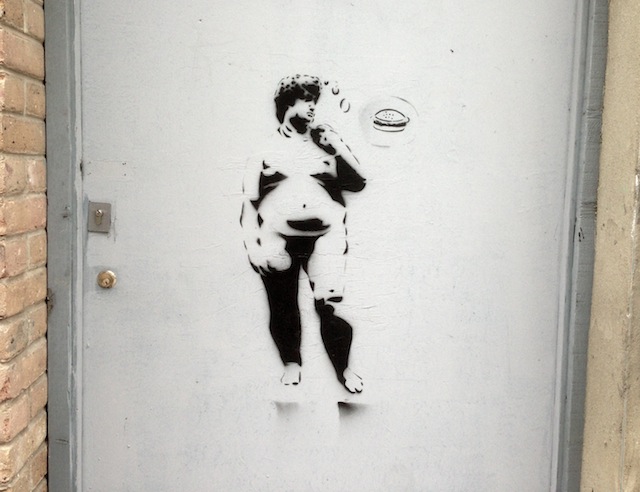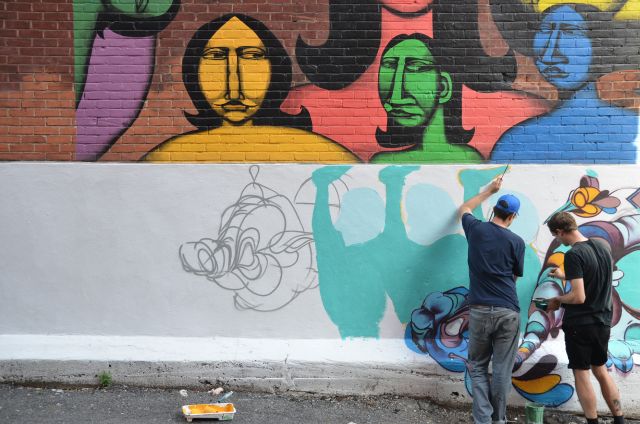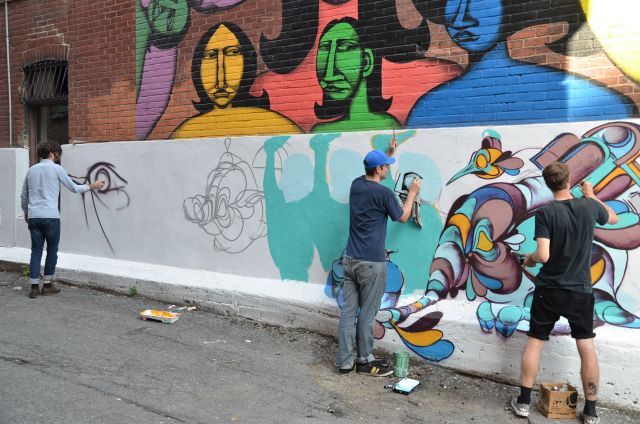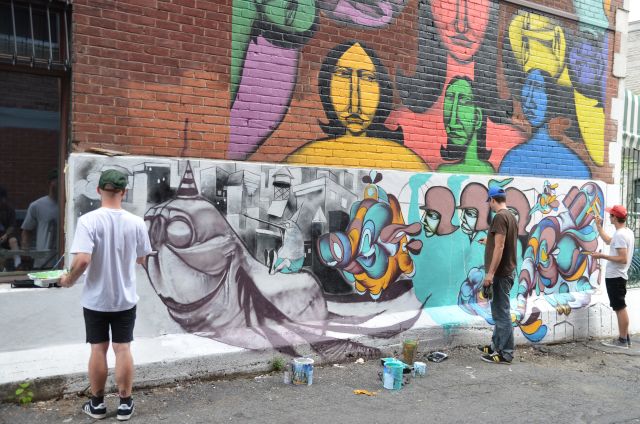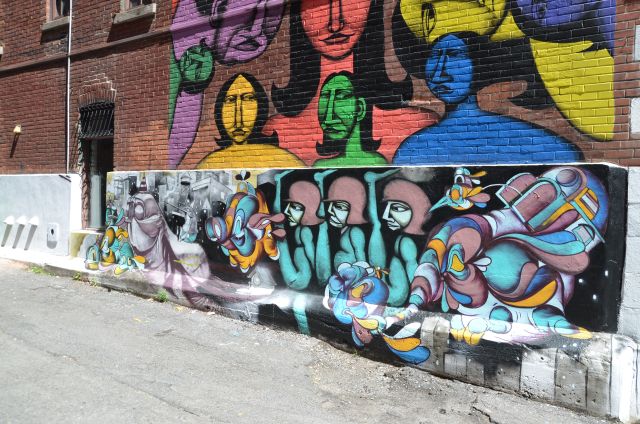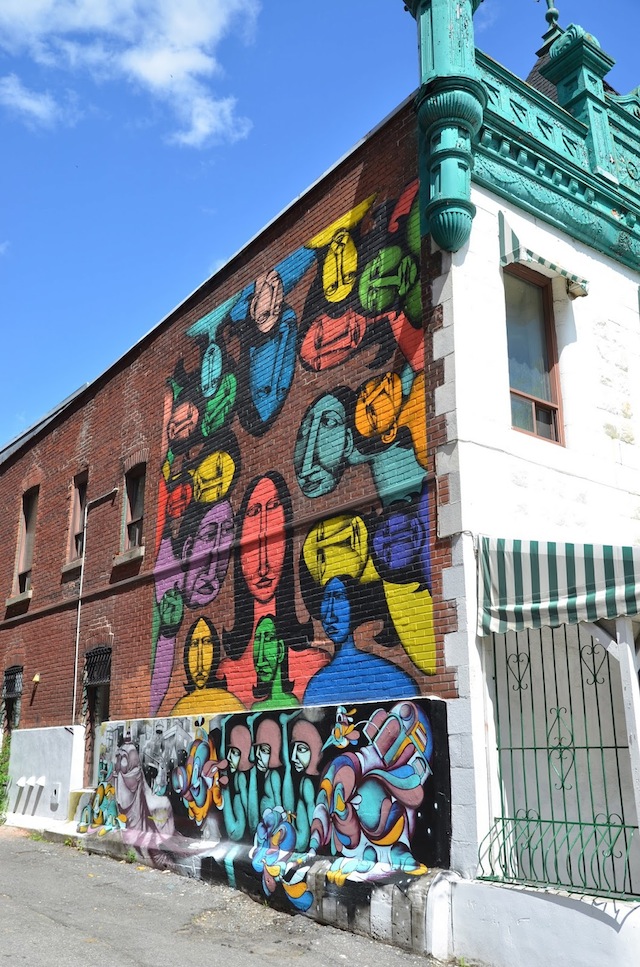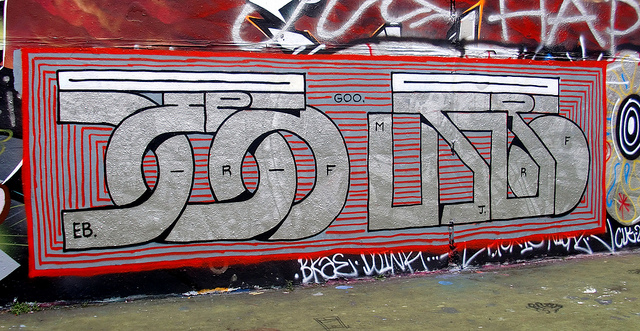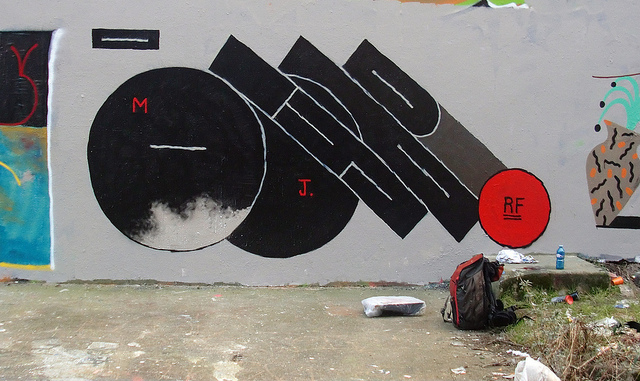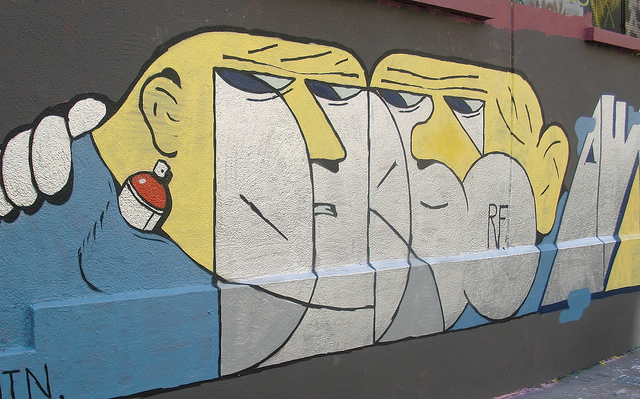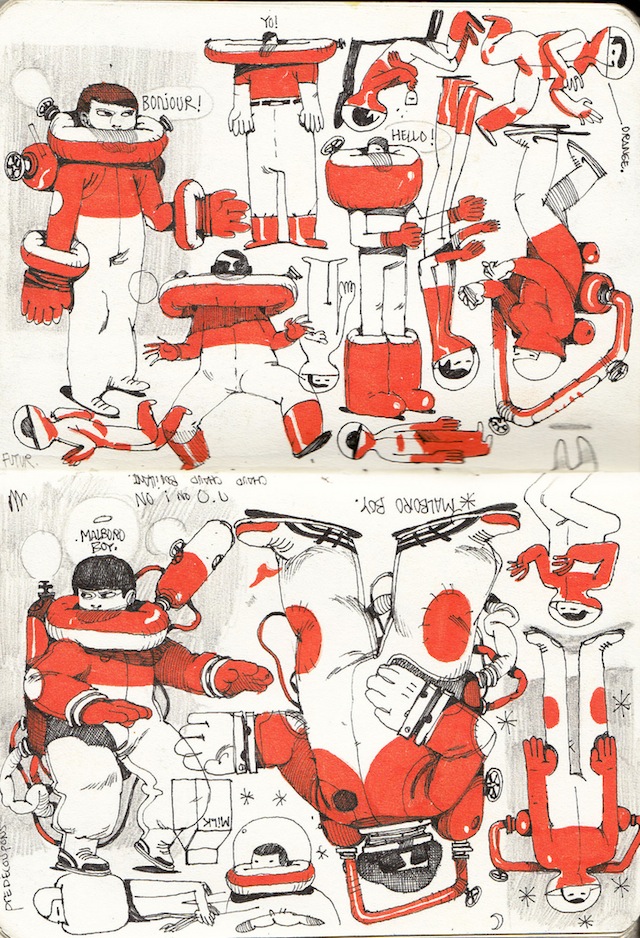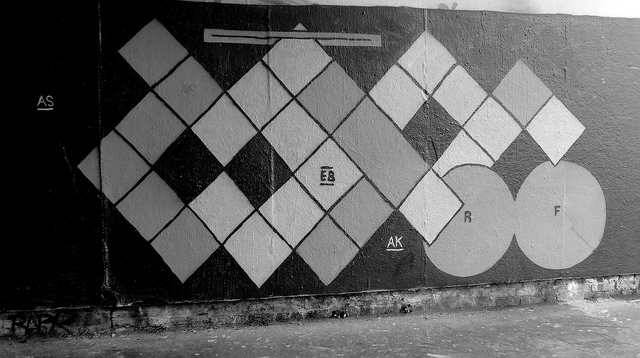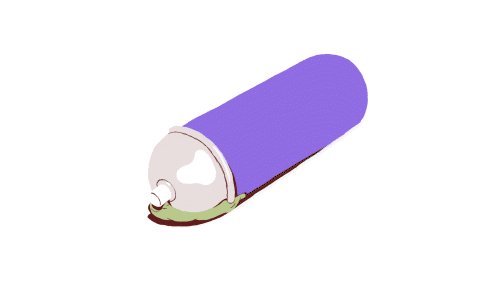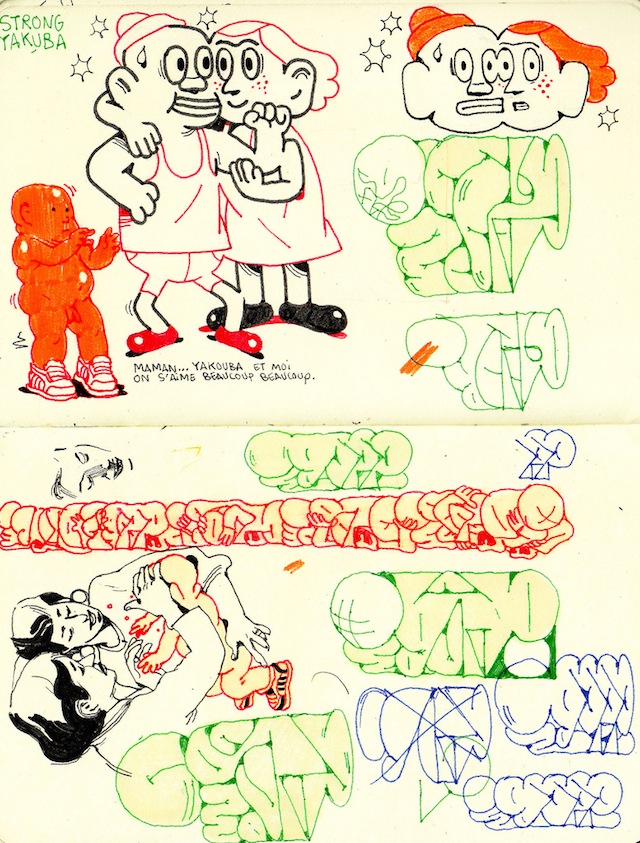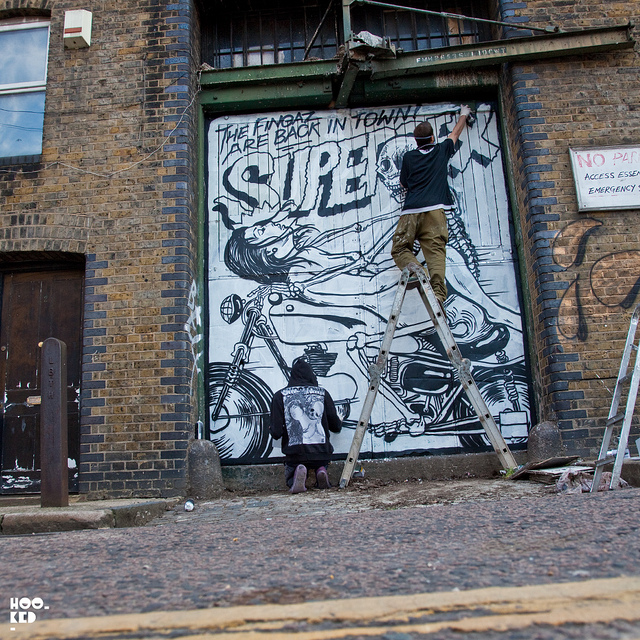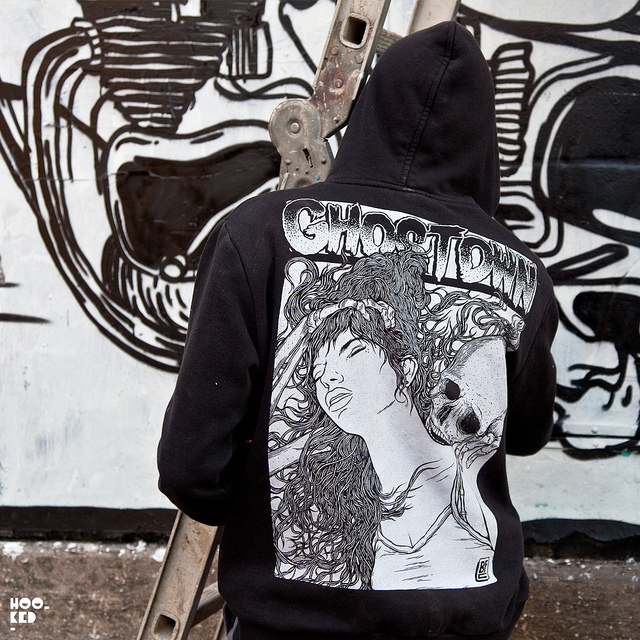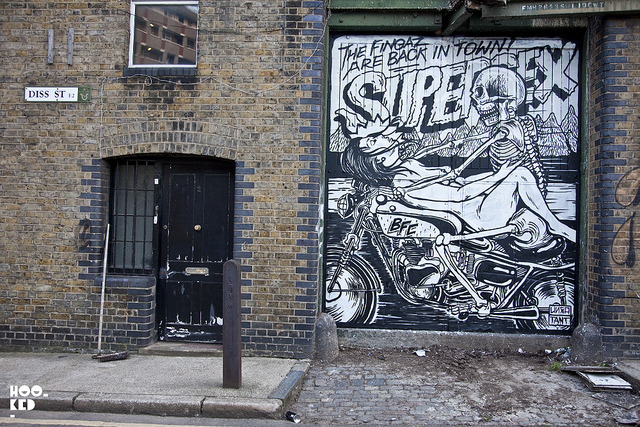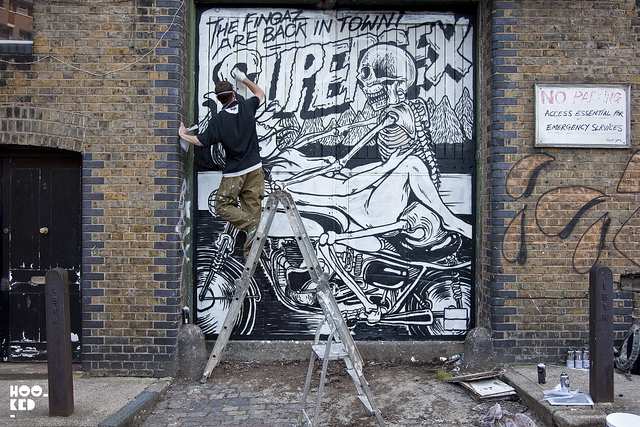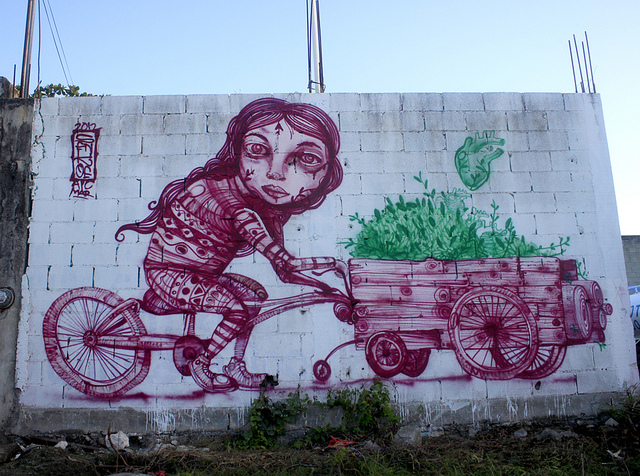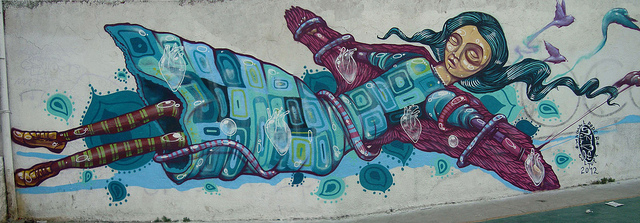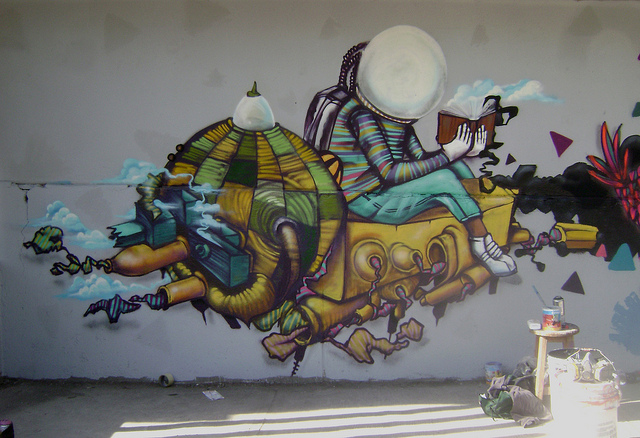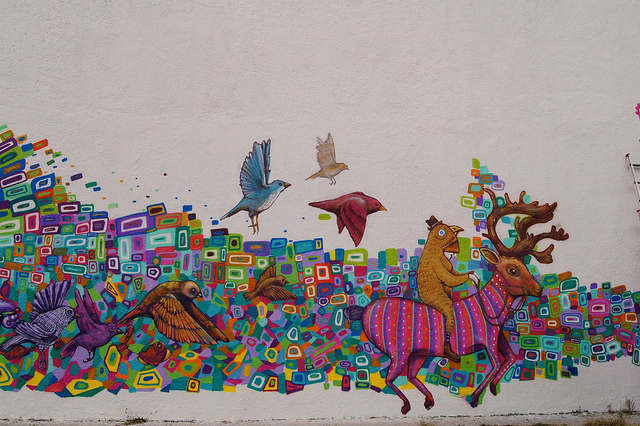
The work of Jack Murray aka Panik ATG as a cornerstone of my early experiences looking at graffiti in London in 2008, and I’ve continued to admire and follow his work since. Tim Hans met Murray in London for Tim’s continuing series of artist portraits, and Murray and I caught up a bit over email.
RJ: Why the decision to start going by Jack Murray instead of / in addition to Panik?
Jack Murray: It’s all about growth. A lot of my studio/gallery work these days doesn’t really reference the world of graffiti so it doesn’t seem right to pull it back into the Graffiti scene by referring to myself as Panik. I like to make artwork that reflects my thoughts on the world, or era’s from the past, I also like to write and take photos. All of that stuff comes from my mind that has developed as a person from birth and not necessarily as my alter-ego that has grown up within Graffiti. Naturally sometimes these worlds cross over but when someone is looking at my work in a gallery etc, I prefer to shake off the direct association with graffiti as it can change people’s perceptions of who you are and remind them of a world that may have little to do with what they are viewing. I’ll always be rooted in Graffiti and people who know, know, but if you don’t know then that’s fine just look at the artwork and make your judgements upon what your viewing, don’t worry about how many tag’s I did, or if I ever got arrested etc. Hope that helped clear that one up.
RJ: For a while, you were one of the most visible writers in London. How does it feel to know you’ve left that kind of mark on this city where kids will grow up thinking of your name as part of the landscape?
Jack Murray: Having a genuine effect over your landscape is what makes graffiti so powerful, as you can battle with the adverts and everything else that fills your field of vision, so knowing at one time I had real control over the city’s landscape (and still do like any other active graffiti/street artist) was/is an ego boost of course but also a very liberating feeling. Writers that came before me were the reason I thought it was possible to do the things that I did and I just want to have the same effect on younger writers coming up. When you’re really active with the bombing you want to be that guy known for going the extra length but once you have got yourself out of that mind set and are focusing on other things, you want to see someone else going for it and soaking up the glory in the same way. Being king of your city forever with no-one stepping in would be dull. When the new writers come through and make an impact, the older heads will always find reasons as to why the newbies are not quite as certified as they are/were but secretly in the back of their minds they’re happy to have some competition and to see things moving forwards.
RJ: While you sit pretty comfortably within the world of graffiti, you paint a lot of characters, even your “P” is a sort of character, and ATG has a logo that goes beyond just being three letters. Is there a reason for that?
Jack Murray: I’m not sure if there is a direct reason for any of that, more just down to us going with whatever feels right at the time. Some people hated it when I started painting characters and just wanted to see me paint straight letter rooftops for the rest of my life, or when ATG moved into being represented as a wider movement/brand, but then others were entertained by all of these transitions. Some people are destined to go in certain directions, so while I might sit pretty comfortable within graffiti, my creative release was never going to just be traditional graffiti and ATG was never going to be just a bombing crew. Once we felt we’d done all we could do within illegal graffiti we simply looked for other stuff to engage in.

RJ: What was it like exhibiting in New York, where you don’t have the same fanbase who have seen your work on their daily commute for years? Did people respond to different things about your paintings?
Jack Murray: New York was great. If anything the fact that people weren’t that familiar with my work made them more intrigued. In general New Yorkers are pretty upfront and vocal with their thoughts which meant there was lots of good feedback from people on the opening night. Having people come straight up to you and tell you how they see your work on the opening night is exactly what you want really as it lets you know that people are properly engaging with it as opposed to just drinking the free drinks and talking about what happened last weekend. Every city has a different atmosphere with inhabitants that have different mannerisms and tastes, on the whole my work seemed like it gelled well with New Yorkers so would definitely like to do more stuff out there down the line.
RJ: What are you working on at the moment?
Jack Murray: I’m currently getting stuck into a seasonal wave of private commissions which is always good. Outside of that I am busy working on a new movement which focuses on a wide variety of things including, abandoned locations, fashion, travel, models, graffiti, photography, film and writing. There’s lots planned for this movement including a gallery show at the beginning of July in London. I’m also in the process of trying to set-up a local arts charity for young people alongside my Mum and some close friends.
Photos by Tim Hans








